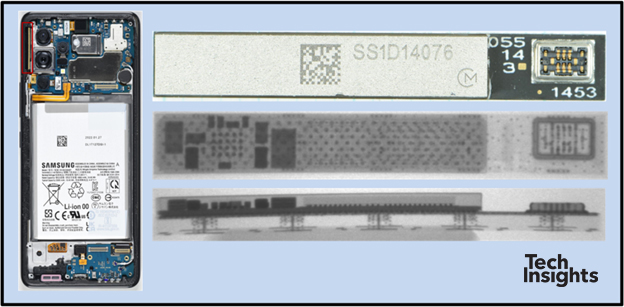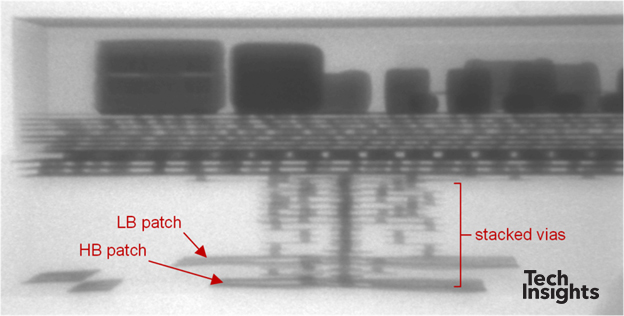Murata/Samsung 2nd Gen mmWave AiP discovered in the Samsung Galaxy A53

John Sullivan
The Google Pixel 6 Pro 5G mobile handset was released in October 2021. The front end module analysis (MAR-2111-801) revealed a Murata packaged mmWave Antenna in Package (AiP) that contained a Samsung phased array Front-End/Transceiver die. This module as shown in figure 1 was formed of two elements perpendicular to one another and placed inside the top of the phone such that the antenna arrays radiated out of the top and back of the phone.
![]()
Figure 1: Google Pixel 6 Pro 5G mobile handset – mmWave AiP
Fast forward 5 months to March of 2022 and the Samsung Galaxy A53 was released. The analysis of this handset has revealed another mmWave AiP from Murata that contains a different Samsung Front-End/Transceiver die. The A53 contains a single AiP and is located such that the antenna array radiates out of the top/side of the handset. The use of a single AiP is interesting in itself as previous systems have always used a minimum of two.

Figure 2: Samsung Galaxy A53 mobile handset – mmWave AiP
Full details of the Murata SS1D14076 will be revealed in the upcoming module architecture report (MAR-2205-803), but let’s see what a quick comparison reveals between the two modules.
The most apparent difference is that the second generation AiP employs a single module substrate to house the antenna elements as opposed to the L shaped dual module configuration used in the 1st generation AiP. The X-ray of the SS1D14076 reveals 5 patch antenna elements. These are presumably dual band dual phased stacked patches, as seen previously in our Murata SS1707051 mm-Wave antenna report.

Figure 3: Murata SS1D14076 mmWave AiP – Xray detail
The 1st generation AiP (SS1707051) has a total of 8 antenna elements between the two substrates that make up the module.. The architecture of this die can be found in the architecture report, ARC-2111-802.

Figure 4: Samsung (SS1707051 AiP) phased array transceiver die
As stated earlier, the 2nd generation AiP (SS1D14076) has a total of 5 antenna elements. This die is slightly smaller than the 1st generation die and has a largely different floorplan.

Figure 5: Samsung (SS1D14076 AiP) phased array transceiver die
Full details of the architecture of this die will be revealed in the architecture analysis report (ARC-2206-802), coming soon to the TechInsights Platform. To view some sample analysis in our Mobile RF subscription, sign up for a free trial to the TechInsights Platform.










